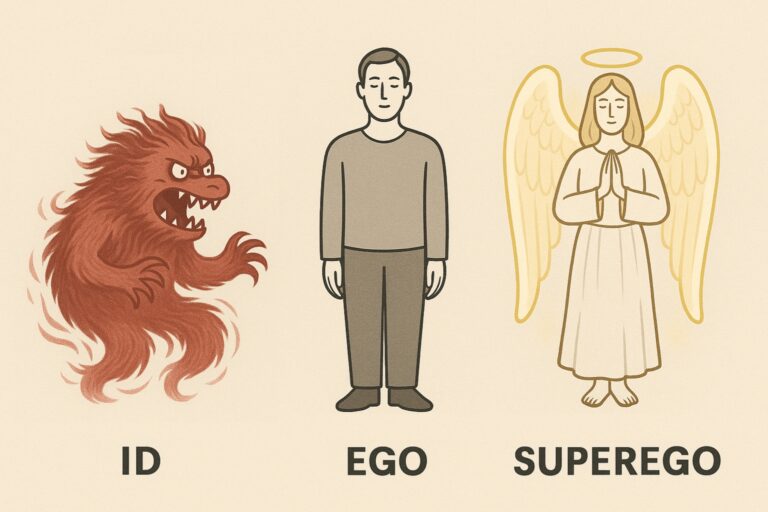History of Psychology: Key Figures, Origins, and Timeline

Quick Summary
Psychology has a long history, beginning with philosophical thought in Ancient Greece and gradually evolving into a scientific discipline in the late 19th century. Early thinkers such as Socrates, Plato, and Aristotle laid the groundwork for ideas about the mind. But it was Wilhelm Wundt’s creation of the first psychology laboratory that marked the beginning of psychology as a science. Since then, schools of thought like structuralism, functionalism, psychoanalysis, behaviorism, humanistic psychology, and cognitive psychology have shaped how we study behavior and mental processes.
Introduction
Understanding the history of psychology provides context for how psychological theories and practices developed. It reveals how early philosophical ideas transformed into the evidence-based science we know today.
Early Philosophical Roots
Before psychology became a science, early philosophers raised fundamental questions about the mind, knowledge, and behavior:
- Socrates (470–399 BCE): Advocated for self-examination, asserting that self-knowledge was essential for moral clarity. His method of disciplined questioning, now known as the Socratic Method, is used in modern psychotherapy to help clients examine their thoughts and beliefs.[1][2]
- Aristotle (384–322 BCE): Explored the nature of the mind in De Anima, discussing topics like memory, sensation, and motivation. He also emphasized that knowledge comes from experience, a key idea that influenced later scientific approaches in psychology.[3]
Psychology Becomes a Science: Wilhelm Wundt
Wilhelm Wundt is widely regarded as the father of modern psychology. In 1879, he established the first experimental psychology lab at the University of Leipzig in Germany. This event is seen as the formal beginning of psychology as a scientific discipline, as Wundt emphasized careful observation and controlled experiments to study conscious experience.[4]
Structuralism: Breaking Down Consciousness
Edward B. Titchener, a student of Wundt, developed structuralism in the 1890s. This approach sought to analyze the structure of the mind by breaking down mental processes into basic components, such as sensations and feelings, using introspection as a primary method.[5]
Key Concepts:
- Basic Elements of Consciousness: Identifying fundamental components like sensations, images, and feelings.
- Introspection: A method of examining and reporting one’s own conscious thoughts and feelings.
Functionalism: What Mental Processes Do
William James, often called the father of American psychology, introduced functionalism as a reaction to structuralism. Functionalists were less interested in the structure of the mind and more focused on how mental processes help people adapt to their environments. James’s book, The Principles of Psychology (1890), became foundational for this movement.[6]
Key Concepts:
- Adaptation: Understanding how mental processes aid survival and reproduction.
- Stream of Consciousness: James’s idea that consciousness flows continuously, rather than being broken into structures.
Psychoanalysis: The Role of the Unconscious Mind
Sigmund Freud introduced psychoanalysis in the late 1800s. He believed that unconscious thoughts, childhood experiences, and inner conflicts significantly influence behavior. His 1900 work, The Interpretation of Dreams, emphasized how repressed desires surface through dreams, symptoms, and slips of the tongue.[7]
Key Concepts:
- Unconscious Motivations: Hidden desires and impulses that influence behavior without conscious awareness.
- Defense Mechanisms: Psychological strategies (like denial or repression) used by the ego to manage anxiety and conflict.
- Psychosexual Stages of Development: Freud’s theory that personality develops through a series of childhood stages centered on different pleasure areas.
Behaviorism: Focusing on Observable Behavior
John B. Watson launched behaviorism in 1913, arguing that psychology should focus only on observable behavior. He rejected introspection, believing that behavior is shaped by environmental stimuli. Later, B.F. Skinner expanded behaviorism through his studies on reinforcement and punishment, leading to operant conditioning theory.[8][9]
Key Concepts:
- Classical Conditioning: Learning through association, where a neutral stimulus becomes linked to a reflexive response. This concept was first demonstrated by Ivan Pavlov, who found that dogs could learn to associate a neutral stimulus, like a bell, with food, eventually salivating in response to the bell alone.[10]
- Operant Conditioning: Learning through consequences, where behaviors are strengthened or weakened by rewards or punishments.
Humanistic Psychology: Emphasizing Growth
Humanistic psychology emerged as a distinct movement in the 1950s, building on ideas published earlier by thinkers like Abraham Maslow in the 1940s. It opposed both psychoanalysis and behaviorism. Carl Rogers developed client-centered therapy, emphasizing empathy and unconditional positive regard. Abraham Maslow introduced the hierarchy of needs, a motivational theory culminating in self-actualization.[11][12]
Key Concepts:
- Self-Concept: The collection of beliefs and perceptions one has about oneself, central to personal identity and growth.
- Unconditional Positive Regard: Accepting and supporting a person regardless of what they say or do.
- Hierarchy of Needs: A motivational theory proposing that humans have a series of needs, from basic survival (food, safety) to higher goals like self-fulfillment (self-actualization).
Cognitive Psychology: The Mind Revisited
Cognitive psychology emerged during the mid-20th century as part of the cognitive revolution, which re-emphasized the scientific study of mental processes. This approach views the mind as an information-processing system that receives, stores, and retrieves data. Key figures such as Jean Piaget explored how children develop thinking abilities through distinct developmental stages, while Noam Chomsky challenged behaviorist views of language learning, proposing instead that humans possess innate mental structures for language acquisition.[13][14]
Key Concepts:
- Information Processing: The mind works like a computer, receiving, storing, and retrieving information.
- Schemas: Mental frameworks that help organize and interpret information based on experience.
- Cognitive Development: Piaget’s theory that children move through four stages of mental development, each characterized by different ways of thinking and understanding the world.
Psychology Today
Today, psychology is a broad and evolving science that draws from multiple perspectives, including biological, cognitive, social, developmental, and clinical approaches. Advances in tools like brain imaging continue to deepen our understanding of how mental processes and behavior are shaped by the brain. Rooted in centuries of philosophical and scientific thought, psychology continues to explore how people think, feel, and act in a complex and changing world.
Interested in a deeper understanding of what psychology is? Read our introduction: What is Psychology?
Key Figures Summary
| Name | Contribution |
|---|---|
| Socrates (470–399 BCE) | Self-examination and Socratic Method |
| Aristotle (384–322 BCE) | Explored the nature of the mind in De Anima |
| Wilhelm Wundt (1832–1920) | Founder of experimental psychology |
| Edward B. Titchener (1867–1927) | Developed Structuralism |
| William James (1842–1910) | Promoted Functionalism |
| Sigmund Freud (1856–1939) | Founded Psychoanalysis |
| Ivan Pavlov (1849–1936) | Discovered Classical Conditioning |
| John B. Watson (1878–1958) | Founding Behaviorism |
| B.F. Skinner (1904–1990) | Expanding Behaviorism with the development of Operant Conditioning |
| Carl Rogers (1902–1987), Abraham Maslow (1908–1970) | Pioneered Humanistic Psychology |
| Jean Piaget (1896–1980) | Developed stages of children’s cognitive development |
| Noam Chomsky (1928– ) | Challenging behaviorism and starting the cognitive revolution |
References
- Brickhouse, T. C., & Smith, N. D. (2022). Socrates. In E. N. Zalta (Ed.), The Stanford Encyclopedia of Philosophy (Fall 2022 Edition). Stanford University. https://plato.stanford.edu/entries/socrates/
- Braun, J. D., Strunk, D. R., Sasso, K. E., & Cooper, A. A. (2015). Therapist use of Socratic questioning predicts session-to-session symptom change in cognitive therapy for depression. Behaviour Research and Therapy, 70, 32–37. https://doi.org/10.1016/j.brat.2015.05.004
- Shields, C. (2020). Aristotle’s psychology. In E. N. Zalta (Ed.), The Stanford Encyclopedia of Philosophy (Winter 2020 Edition). Stanford University. https://plato.stanford.edu/archives/win2020/entries/aristotle-psychology/
- Wundt, W. (1948). Principles of physiological psychology, 1873. In W. Dennis (Ed.), Readings in the history of psychology (pp. 248–250). Appleton-Century-Crofts. https://doi.org/10.1037/11304-029
- Titchener, E. B. (1908). Lectures on the elementary psychology of feeling and attention. Macmillan.
- James, W. (1890). The principles of psychology. Henry Holt and Company.
- Freud, S. (1953). The interpretation of dreams. In J. Strachey (Ed. & Trans.), The standard edition of the complete psychological works of Sigmund Freud (Vols. 4–5, pp. 1–627). Hogarth Press. (Original work published 1900)
- Watson, J. B. (1913). Psychology as the behaviorist views it. Psychological Review, 20(2), 158–177. https://doi.org/10.1037/h0074428
- Skinner, B. F. (1938). The behavior of organisms: An experimental analysis. Appleton-Century-Crofts.
- Pavlov, I. P. (1927). Conditioned reflexes. Oxford University Press.
- Rogers, C. R. (1951). Client-centered therapy: Its current practice, implications, and theory. Houghton Mifflin.
- Maslow, A. H. (1943). A theory of human motivation. Psychological Review, 50(4), 370–396. https://doi.org/10.1037/h0054346
- Piaget, J. (1952). The origins of intelligence in children (M. Cook, Trans.). International Universities Press. (Original work published 1936)
- Chomsky, N. (1959). Review of B. F. Skinner’s Verbal Behavior. Language, 35(1), 26–58. https://doi.org/10.2307/411334






